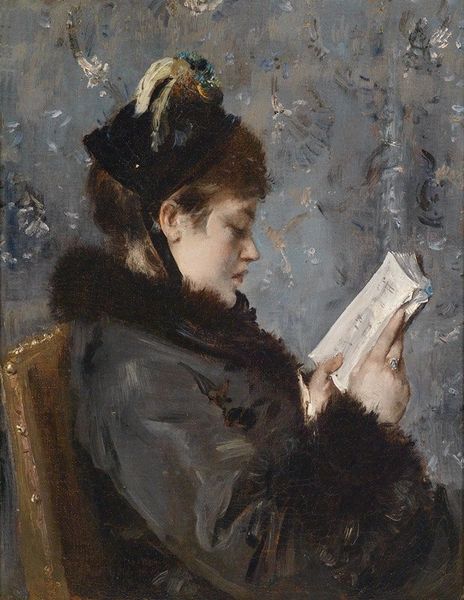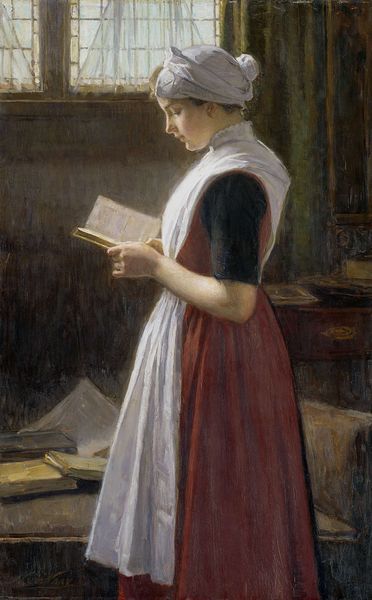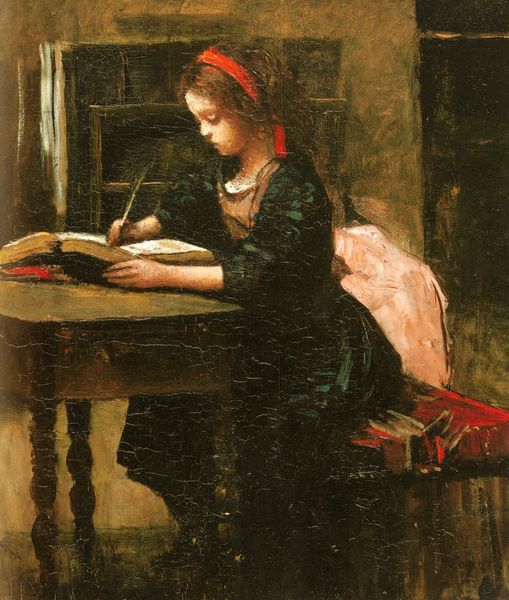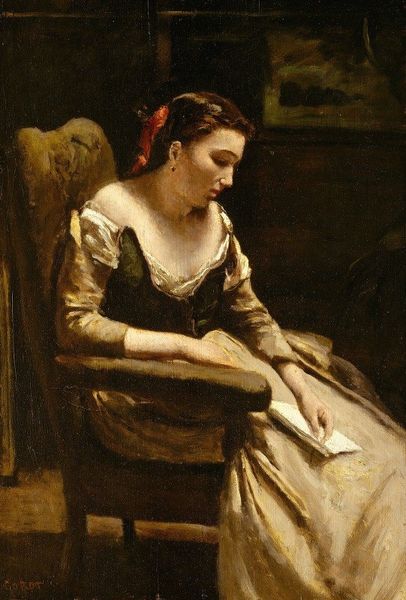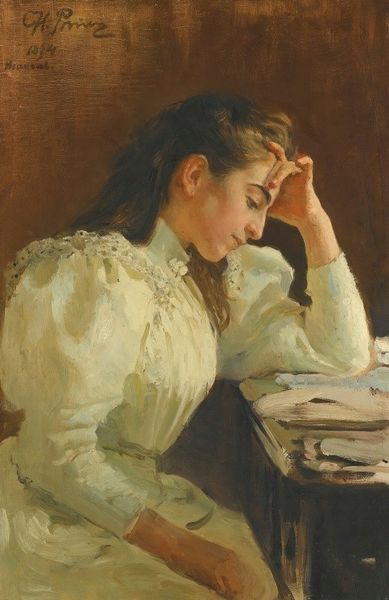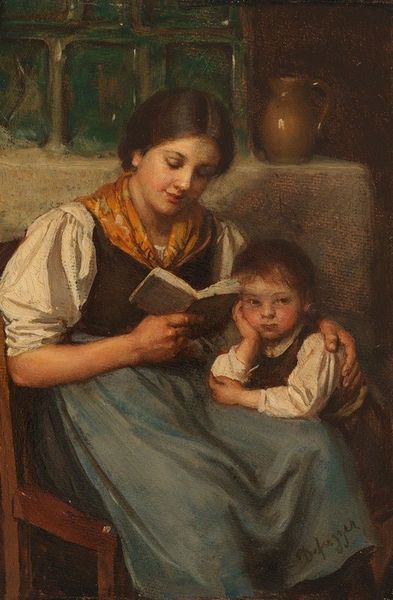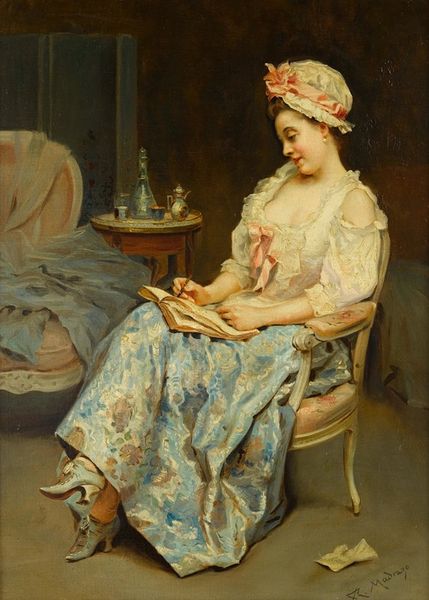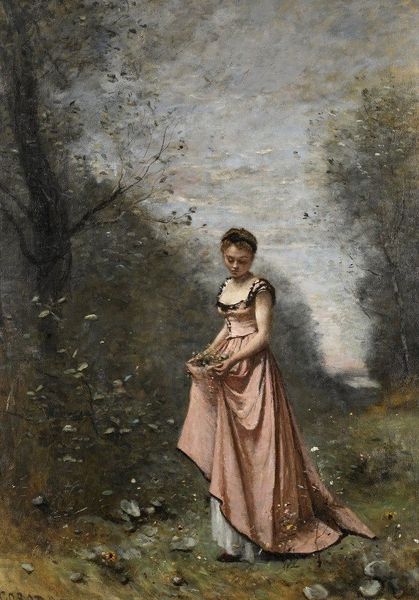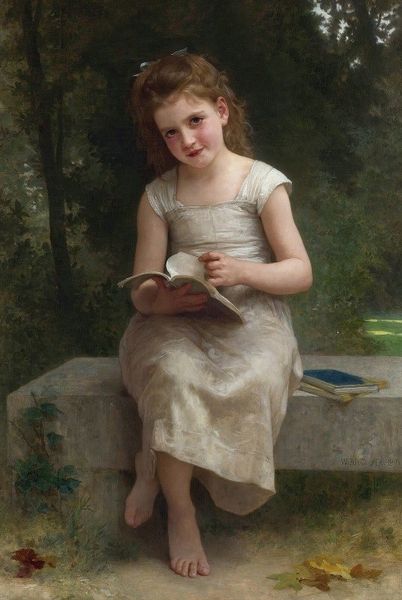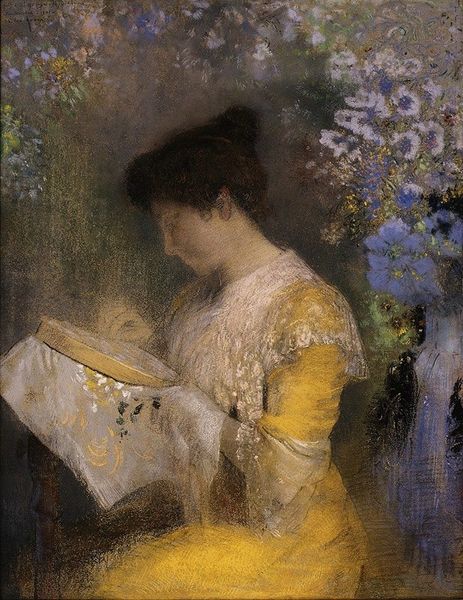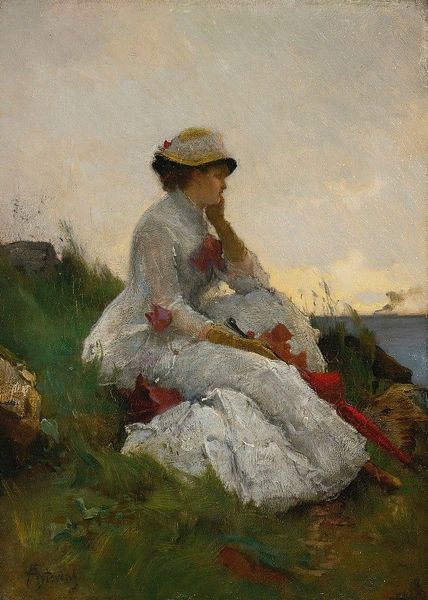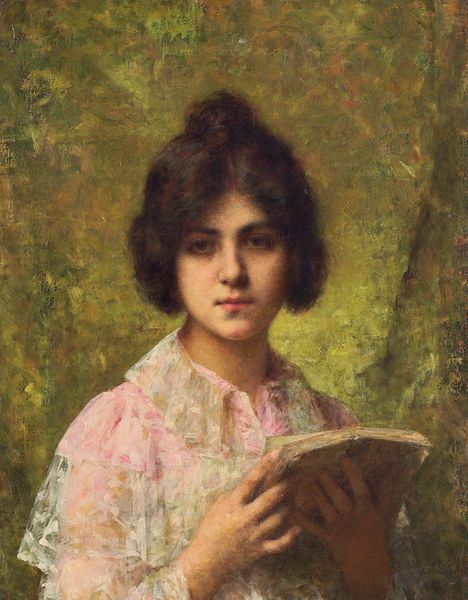
Copyright: Public Domain: Artvee
Editor: This is "A Woman Reading," painted in 1869 by Camille Corot, using oil paints. It’s incredibly serene; the muted colors create a really tranquil atmosphere. How would you interpret this work, considering the time it was created? Curator: This painting presents an intriguing intersection of Romanticism and the emerging Realist concerns. In the social context of the late 1860s, France was on the cusp of significant social and political changes. How do you think Corot’s decision to depict a woman engrossed in reading reflects the changing role of women and the rising value of literacy in that era? Editor: I hadn't thought of it that way! Perhaps reading, at that time, signified a form of empowerment or independence for women, subtly challenging the norms. Curator: Exactly. Moreover, note how Corot positions the woman not in a domestic interior, which was conventional, but rather within a landscape. The public sphere was typically reserved to men and this brings us to my question for you: How does the contrast between this figure's private act and its natural setting disrupt societal expectations about female spaces and actions? Editor: It's almost as if he's granting her access to intellectual and physical freedom, outside of societal constraints. So the act of reading becomes inherently political in a way? Curator: Precisely. Think about how museums and public exhibitions helped democratize art and knowledge at the time. The painting then can be seen as participating in, and promoting this larger societal shift, advocating for expanded educational opportunities and, indirectly, civic engagement. Editor: I hadn't considered the subtle power dynamics within such a seemingly peaceful scene. Curator: And this peaceful presentation is why Corot was so successful. By grounding his paintings of woman in pleasant aesthetic they appeared safe to the public who embraced them whole heartedly! It reminds us to look deeper. I learned from you that peace might hide power, thank you! Editor: Thank you, too. This really gave me new appreciation for Corot and the role of his art in portraying the societal shifts of his time!
Comments
No comments
Be the first to comment and join the conversation on the ultimate creative platform.
